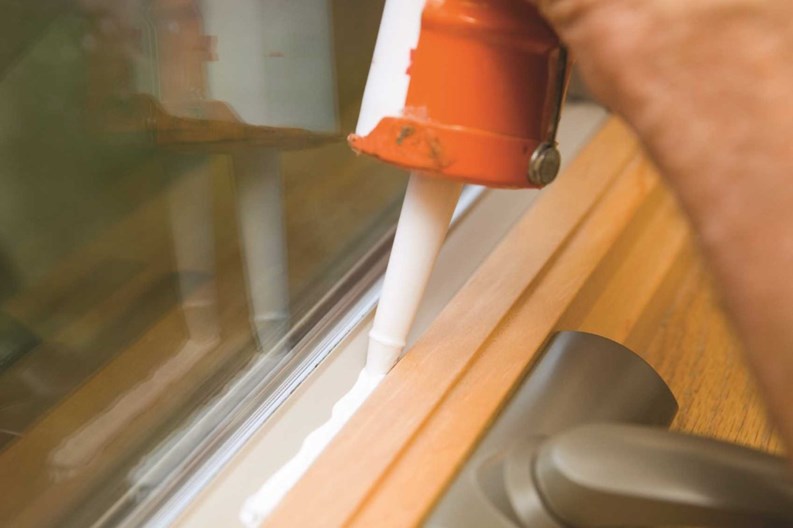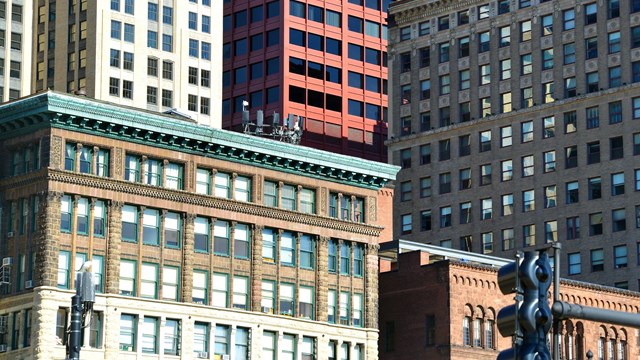With the possible exception of fire, nothing is more damaging to residential buildings and the property of their occupants as leaks. Whether it’s a torrential deluge from the upstairs neighbor’s overflowing bathtub or a slow, seeping leak around the window frames, water causes huge amounts of physical damage, and can contribute to the proliferation of mold—and all the potential health hazards that represents.
And though condo boards never enjoy addressing the perennial problem of weatherproofing, seasonal reviews allow unit owners and board members to catch small maintenance items before they become major repair bills.
That’s why it’s vital for buildings to make sure their structure is as waterproofed as it can possibly be, and that any breaches in their building envelope are dealt with swiftly and competently.
“A building envelope is simply a barrier to separate the exterior climate from the interior climate,” says Mike Carrano, owner of Rite-Way Injections Waterproofing in Bedford Park. “This starts at the foundation all the way to the roof line. Parts of the envelope include the waterproofing of the foundation, the air on the exterior walls, to the doors, windows and insulation in the attic, anything that will separate the indoor and outdoor climates.”
Building wrap is generally installed prior to the building’s exterior façade and helps protect against air and water infiltration while allowing harmful moisture vapor to escape the wall cavity. Building wraps can hold up to the rigors of residential job sites because of its increased tear strength, durability and ability to withstand extended UV exposure. Certain building wraps may contribute towards U.S. Green Building Council LEED points.
The Main Culprits
Experts agree that any part of a building exposed to the elements is prone to wear-and-tear and has the potential to be an entry point of moisture penetration and water intrusion.
“It depends on what type of roof you have. Flat roofs are often tarred over, so that is a vulnerable spot to water damage, the membrane that wears out over time,” says Matt Stock, vice president of U.S. Waterproofing Company in Rolling Meadows.
“From the outer walls of the building if it’s brick, the brick itself is porous and the mortar pulls the brick together. Windows are vulnerable. If the window is not sealed properly that is a potential spot for water to get in. Below ground through the foundation wall, cracks in the walls if your walls are made of concrete, brick, stone, block—is all porous and it’s held together by individual pieces—all vulnerable spots—also. You can also get seepage from the floor itself. Sometimes the earth will retain so much water it has no place to go but up.”
“Any exposed area is vulnerable to water intrusion, including parapet walls and chimneys,” adds Chuck McCrimmon, president of Dakota Evans Restoration Inc. in Palatine. “And any place where dissimilar materials meet (window frames to masonry and metal panels to precast) is also vulnerable.”
Weather, poor construction, building age and human error can also cause a building to develop leaks. Old and new buildings are both susceptible to water damage Shoddy construction on newer buildings can lead to a leaky façade and older buildings have more than likely experienced damage due to numerous years of exposure to the elements.
Seepage and water damage aren’t strictly above ground problems. A common area in which buildings experience leaks is the foundation, because cracks often occur in the foundation wall. In fact, say experts, ventilation is a key factor in nearly all areas of condo construction—including often overlooked basement and wall cavities, so it is mandatory that the wall below ground level is sealed to prevent the entrance of moisture. Structural waterproofing is the term used to describe when a wall below ground level is sealed to prevent the admission of moisture. With below-ground conversions various structural pressures can complicate things. That’s why all possibilities have to be reviewed by a professional surveyor before action is taken.
An Issue of Ownership
Most condominium bylaws are written in such a way as to stipulate that the window belongs to the unit owner but the structure or frame around the window belongs to the association. So weatherproofing buildings can be a tricky proposition when one considers the unique challenges associations often face with door and window replacement.
“This is one of the biggest problems we have when dealing with an association—who is responsible for waterproofing repairs or issues,” says Carrano. “Most of the associations we deal with have bylaws that are not clearly understood by the homeowner and can be carefully worded to benefit the association, leaving a very unhappy homeowner who is stuck with the repair cost.”
“Things differ with each association depending on their individual bylaws,” adds McCrimmon. “If it is a common element, costs would be picked up through the association, if it’s a limited common element, the association can compel to have work done and either pay for the work or charge back the owner, if it is spelled out as a homeowner responsibility, they would be responsible for the costs.”
In addition to the unique ownership issues of door and window replacement, unit owners will eventually realize that it’s also difficult to address a roofing issue without addressing siding and at some point you may have to consider integrating the projects together.
“It is very possible to separate projects considering they are separate issues,” observes Carrano.
“Sometimes it’s best to do separate projects and sometimes it’s best to integrate them. It’s a case-by-case situation,” says Stock. “It depends on if it’s a common element.”
Identifying Problems
It is better to head off problems before they start, so waterproofing and weatherproofing experts recommends setting up a maintenance plan to deal with leaks and repairs before they occur and before they get out of hand.
“The changing of the seasons is always a good time to inspect the exterior facades of your building,” says Keith Moore, president and owner of U.S. Exterior Maintenance & Repair in Plainfield. “Seasonal reviews are always a good idea.”
“Believe it or not caulking plays a key role in the building envelope,” says Carrano. “Some of the worst seepage issues are caused by the lack of caulking or maintenance around windows, doors, vents and pipes. These areas leak the most during wind-driven rains, so the sealants around them should be maintained properly.”
In addition to leaks, there are signs that a building is having waterproofing problems. “Odor is one of the first signs of water issues,” says Carrano. “Is there a damp smell in the house? Water seepage does not always show visual damage right away. It will sometimes take several months to show visual damage. This happens because it takes time for all the building materials (wood, drywall, insulation) to soak up the water. If the seepage only occurs during heavy rainfalls it may take time to show evidence of water infiltration. By then mold and discoloration will appear on the building materials.”
“Water staining at the base of the floor, the top of a window and around a window or door could be signs of water intrusion,” says Moore. “Buckling wood floors or wet carpet, dark staining, a white powder on the face of stucco or brick, buckling wood and peeling paint are all possible signs of potential water damage.”
Despite its appearance as an external weather barrier, experts say even the most modern siding materials were not designed as complete protection against moisture. Whether windows, roofing or siding, when the time does come to discuss large scale updating, money worries often affect association decision-making—a problem that may seem even more daunting in a down economy.
There are various ways waterproofers identify problem areas if leaks are not glaringly obvious.
Additionally, leak hunters will simulate heavy rainfall, use small digital cameras similar to what a cardiologist or plumber uses and infrared moisture detectors that supply an x-ray of any flat surface where moisture may be trapped. You can also use a moisture meter, which can be bought in any local hardware store.
In the end, say the experts, talk about weatherproofing with your contractors and management team in a reasonable manner. Then have an open conversation with your residents at board meetings and remember to keep them informed with newsletter updates so that they can monitor the ongoing project.
Matthew Worley is a freelance writer and a frequent contributor to The Chicagoland Cooperator. Staff Writer Christy Smith-Sloman contributed to this article.







Leave a Comment